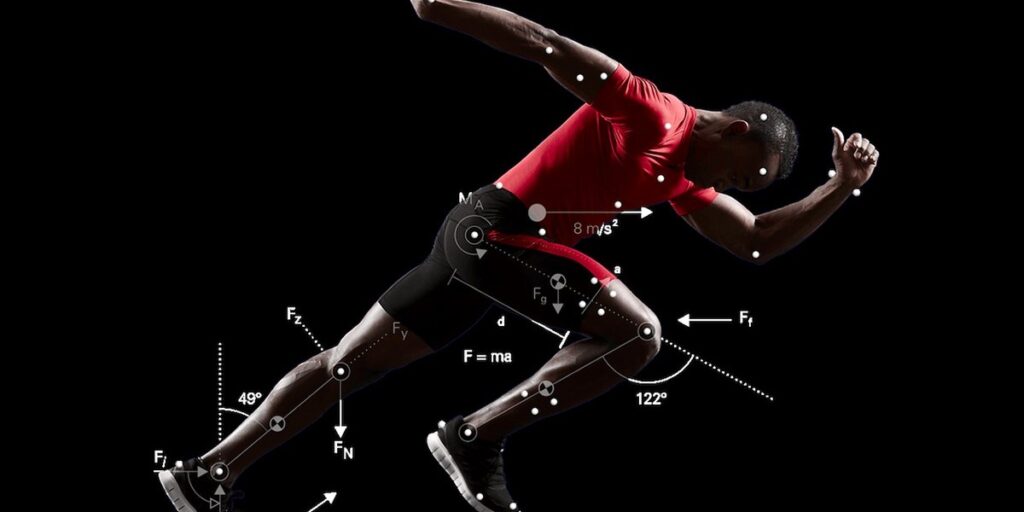Technology has revolutionized many aspects of our lives, and sports are no exception. From wearable devices to advanced data analytics, the integration of technology in sports has profoundly transformed how athletes train, compete, and recover. This article explores the multifaceted impact of technology on sports performance.
Introduction to Technology in Sports
The evolution of technology in sports has been remarkable. From early innovations like stopwatches and basic video recordings to today’s sophisticated wearables and data analytics platforms, technology’s role in enhancing sports performance continues to grow. It offers athletes, coaches, and teams unprecedented insights and tools to reach new heights.
Wearable Technology
Wearable technology is a game-changer in sports. Devices like smartwatches, heart rate monitors, and GPS trackers provide real-time data on an athlete’s performance. This data includes metrics like speed, distance, heart rate, and even sleep patterns. By analyzing this information, athletes can make informed decisions to improve their training routines and performance.
Data Analytics in Sports
Data analytics has become a cornerstone of modern sports performance. The ability to collect and analyze large volumes of data allows for optimizing training programs and in-game strategies. For example, basketball teams use data analytics to analyze player movements and optimize plays. This data-driven approach leads to more effective training and improved performance outcomes.
Advanced Training Equipment
High-tech gym equipment, VR, and AR are revolutionizing how athletes train. VR and AR provide immersive training environments, allowing athletes to practice scenarios they might face in competition. Simulators, such as those used in skiing or race car driving, offer realistic practice opportunities that were previously impossible.
Biomechanics and Motion Analysis

Biomechanics and motion analysis are crucial for understanding and improving athletic performance. Tools like motion capture systems and force plates analyze an athlete’s movements in detail. This information helps in refining techniques, enhancing efficiency, and reducing the risk of injuries by identifying and correcting improper movements.
Nutrition and Recovery Technologies
Technology-driven nutrition plans are tailored to an athlete’s specific needs, optimizing their diet for peak performance. Wearable devices that monitor recovery metrics such as sleep quality and muscle recovery ensure athletes are recovering effectively. Innovations like cryotherapy chambers and compression gear also aid in quicker recovery.
Sports Medicine and Injury Prevention
Advanced medical technologies have made significant strides in injury diagnosis, treatment, and prevention. Techniques such as MRI and ultrasound provide detailed insights into injuries, while technologies like shockwave therapy and laser treatment promote faster healing. Preventive measures, supported by wearables and motion analysis, help reduce injury incidence.
Communication and Coordination Tools
Effective communication is vital in team sports. Tools like instant messaging apps and tactical planning software enhance coordination among team members. Coaches use these technologies to relay strategies and analyze game footage, ensuring everyone is aligned with the game plan.
Mental Training and Psychological Tools
Mental conditioning is as important as physical training. Apps and tools designed for mental training help athletes with focus, relaxation, and visualization techniques. VR is also used for mental rehearsal, allowing athletes to mentally practice and prepare for various scenarios they might encounter during competitions.
Case Studies of Technology-Enhanced Performance
Numerous athletes and teams have successfully integrated technology into their training and competition routines. For instance, professional cyclists use power meters to measure their output and adjust their training accordingly. Football teams employ GPS trackers to monitor player movements and optimize formations. These success stories highlight the tangible benefits of technology in sports.
Conclusion
The future of sports technology is bright, with emerging trends promising further advancements. Innovations such as AI-driven performance analysis, advanced wearables with more precise measurements, and even more immersive VR training environments are on the horizon. Staying ahead of these trends will be crucial for athletes and teams aiming to maintain a competitive edge.
